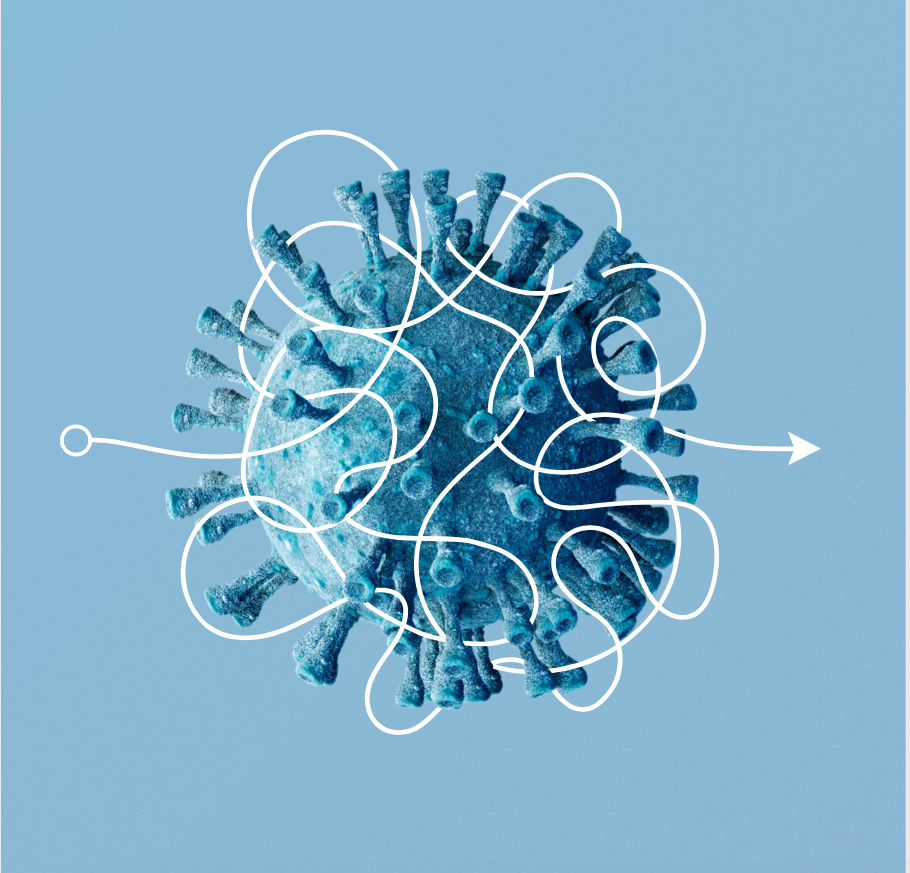How Corona Has Changed Us: Lessons from the Pandemic
Part II in a Series
Covid-19 has impacted every area of our lives—the way we pray, the way we think, the way we learn and the way we socialize. We asked rabbis, principals, teachers and others to reflect on the way their professions and their lives in general have changed. How has the rabbinic role changed? How has chinuch been affected? Will some of these changes be permanent? What are the lessons we can draw from the radically altered lives we are living?
On Tefillah
In my four decades of life as a ba’al teshuvah, embracing the mitzvot binding on a Torah-observant adult, prayer has always come easily. At least, the mechanics of prayer have. I have faithfully prayed three times a day and have mastered the roadmap of the daily service—what to say aloud and what to say under my breath, when to stand and when to sit, et cetera.
But do I really pray? Do I have kavanah or do I just go through the motions? Do I turn to my Creator with praise, thanks and requests when I’m not in shul or have a siddur in my hands?
These thoughts crossed my mind when the life-and-death reality of a worldwide plague, the coronavirus disease that is stalking the globe, made the words of the prayers I say every day seem more real. Kavanah was no longer a struggle.
. . . Who heals all flesh
and acts wondrously
. . . Who gives strength to the weary.
. . . Who hears prayer.
Just before the coronavirus crisis reached its zenith, I underwent cataract surgery. Sight in the eye that was operated on was amazingly clear the next day when I returned to the physician’s office to have the patch removed. Objects that had looked like I was seeing them through waxed paper appeared clear. For the first time since fifth grade, some sixty years earlier, I was able to read and see my computer screen without glasses.
How long would it take, I wondered, before I forgot what it was like to live with fuzzy vision and would would begin taking my greatly improved eyesight for granted?
How long would it be, I wondered, before I took my health, and that of everyone around me, for granted? Would I recall how I breathed a sigh of relief when waking up symptom-free every morning? Would I remember how sincere my prayers were at the height of the Covid-19 scare? Would my tefillah remain strong?
I pray that it will.
Steve Lipman is a frequent contributor to Jewish Action.
On the Rabbinic Role
 We began the shuttering of our shuls shortly before Pesach, and we began reopening shortly after Shavuot. Pesach is the holiday that focuses on the individual and the observance of rituals in the home, whereas Shavuot represents the coalescing of those same individuals into a communal unit grouped around the hallowed grounds of Mount Sinai.
We began the shuttering of our shuls shortly before Pesach, and we began reopening shortly after Shavuot. Pesach is the holiday that focuses on the individual and the observance of rituals in the home, whereas Shavuot represents the coalescing of those same individuals into a communal unit grouped around the hallowed grounds of Mount Sinai.
Two lessons from this pandemic remain in the forefront of my mind. One about community, and the other about the individual.
The first lesson: We’ve been witness to many individuals who were “chalishing” (pining in Yiddish) to return back to prayer with a minyan, even before it was deemed safe to do so. Looking at this rationally and objectively from a halachic perspective, we should all have recoiled at the prospect of returning to minyan. When weighing the halachic benefits of tefillah b’tzibbur versus the halachic requirement of even potential pikuach nefesh, it seems like a no-brainer. So why were devoutly religious Jews ignoring the entreaties of their rabbis and doctors and running back to minyan so quickly?
We might cynically conclude that for some, the desire to pray with a minyan had nothing to do with religion and was instead a craving for social interaction. Especially for Jewish men, the socialization of our daily minyan is as much a part of our lives as our familial interactions.
I don’t think it’s that simple. I believe this need to daven with a minyan is a religious need too, rooted at our spiritual core. Our Sages1 tell us that at least for the Jewish male, there is a qualitative difference between private tefillah versus tefillah b’tzibbur. The Shechinah, God’s Divinity, descends upon a minyan to receive our words of prayer directly, whereas when we pray alone, our words of prayer must first be transported up to Heaven in order to reach God.
Perhaps the Sages are signaling that being in the presence of our Jewish brethren contributes to our individual relationships with God. When Hashem sees us coming together as a congregation, He gets nachat seeing His children praying together and getting along with each other, like any parent who sees his children playing nicely together. Knowing that one is pleasing his Father in Heaven in turn gratifies the congregant.
I’m hopeful that when we do return to shul fully it will be with a newly energized appreciation for that social-religious component of our Judaism. I’m also hopeful that the social component does not decouple from the religious component.
The second lesson most acutely affects those of us in my chosen vocation as a rabbi, but it also applies to every individual. I have truly cherished these last three months in isolation. I have often davened with more kavanah, that is, with greater focus on the words. I have also davened with more honesty, that is, my words and prayer gesticulations have been more accurately reflective of my feelings and thoughts.
The Satmar Rebbe purportedly once walked into a Purim spiel (play) where one of the Chassidim was doing a drop-dead perfect imitation of the rebbe. Everyone in the room was laughing, except the rebbe himself. Instead, bitter tears began to roll down his face. Mortified, the impressionist ran over to the rebbe to apologize. “No need,” responded the Satmar Rebbe. “I was crying because you reminded me of all the times that I, too, was impersonating the rebbe.”
The rabbi sits at the mizrach-vant, the eastern wall of the shul, on full display to all. He must play the role of the fervently devout, of the davener with kavanah, even when he feels, at any given moment, empty of spiritual stirrings. I love my kehillah and I love my job. But the one thing I’m not looking forward to is becoming a religious prop again, and in the process, being reminded of how often I’m impersonating the rabbi.
Finally, I will miss my wife and children. As sequestered as I’ve been, busily working in my basement home office, I’ve truly cherished these last several Shabbatot alone with family when, for the first time in over thirty years, Shabbat became my day of rest. I finally had the opportunity to sit with my children during davening, and to hear them lead the singing, chanting and leining. I will especially miss our family seudah shelishit, the most spiritual time of the entire week, when my wife, children and I sang words of devotion and love to God and to each other. I will forever cherish these last few months and this time with my family, even as we commence putting the pieces of our community back together.
What will be in the future? No one knows. I hope and pray that the best parts of community and individual will be preserved for years to come.
Note
1. See Beit Yosef to OC 101, s.v. “V’yachol l’hitpallel b’chal lashon sheyirtzeh.”
Rabbi Daniel Korobkin is mara d’atra of Beth Avraham Yoseph of Toronto Congregation and president of the Rabbinical Council of America.
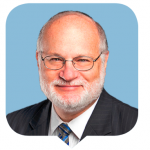 The coronavirus crisis arrived suddenly, unexpectedly, and for me personally—well, for all of us—at the most inopportune time. It coincided with and transformed my last few months as mara d’atra at Congregation Bnai Yeshurun in Teaneck, New Jersey, where I served for twenty-six years before making aliyah. My plans for these months were thwarted; instead of shiurim, reflections, heartfelt reminiscences and a gradual farewell, I was confronted with the sudden illness and death of too many members and friends, the prolonged closure of the shul, the dislocation of adults and children, the financial hardships that were visited on the community, and a forced separation from my beloved community—all as I was packing and planning my departure.
The coronavirus crisis arrived suddenly, unexpectedly, and for me personally—well, for all of us—at the most inopportune time. It coincided with and transformed my last few months as mara d’atra at Congregation Bnai Yeshurun in Teaneck, New Jersey, where I served for twenty-six years before making aliyah. My plans for these months were thwarted; instead of shiurim, reflections, heartfelt reminiscences and a gradual farewell, I was confronted with the sudden illness and death of too many members and friends, the prolonged closure of the shul, the dislocation of adults and children, the financial hardships that were visited on the community, and a forced separation from my beloved community—all as I was packing and planning my departure.
The frustrations in leaving this way were enormous, even as the sting of my exit was somewhat ironically eased because the goodbye happened over months without real, personal and physical interaction. I ceased being a live, physical presence months before I actually left. In that time, I became a “virtual” rabbi of the telephone, the daily WhatsApps and the Zoom classes.
Consequently, I was probably more visible during the scourge than in normal times! The dozens of people who interacted with me daily at minyanim and shiurim were
augmented by the hundreds who now had me as a daily visitor in their homes via their smartphones and computers. Will that change the rabbinate of the future? It might, but not altogether positively, as physical interactions (which I missed greatly) are more tangible and impressive than virtual ones. Attendance at shiurim, which colleagues have confirmed have declined for years because classes are recorded and available at a congregant’s convenience or on a commute, might further decrease as people ask for Zoom access that allows them to participate (and perhaps multi-task!) from home.
Another apprehension I have going forward is our attitude toward tefillah b’tzibbur. In our shul, we were remarkably successful in creating and sustaining for many years more than a dozen minyanim every day, morning and night, and seven more on Shabbat morning. Public prayer was not just a desideratum but a cherished value and daily expectation. The pandemic necessitated a re-orientation, in which minyan became something to be eschewed and even dreaded.
Notwithstanding the exigencies of the moment that required the closure of all synagogues, did we perhaps exaggerate the unimportance of tefillah b’tzibbur by making it such a subordinate concern that it was the last of the enterprises we sought to reopen? When people in New Jersey, for example, were permitted to go to work or the beach with social distancing but minyanim remained banned, did that excessive caution indicate to people that tefillah b’tzibbur is not “essential”? If so, might not tefillah b’tzibbur in the future take a back seat to shalom bayit (a person deciding to spend more time with one’s spouse or children), to greater spiritual fulfillment from davening privately (with children quietly and deliberately learning the sedra actively and not just passively listening to it being read hastily), to work obligations and other considerations?
To be sure, there are those congregants who will return in full force and even more enthusiastic and committed than before. With others, the rabbi will have to work overtime to reinforce the virtue of a live and not just virtual community.
The primary task, though, will be to make some sense of this chaotic and uncertain world. We must reassure people that, even as our social and financial worlds have been altered, the building blocks of Jewish life—Torah, mitzvot and Klal Yisrael—remain as secure, as fundamental, and as important as ever.
Rabbi Steven Pruzansky is rabbi emeritus of Congregation Bnai Yeshurun in Teaneck, New Jersey, having recently made aliyah.
 How has this corona period of time changed the role of the rabbi?
How has this corona period of time changed the role of the rabbi?
In my view, it hasn’t.
What has changed, perhaps drastically, are the methods of implementation rabbis have used to fulfill their role since this worldwide virus began.
Let us begin with a fundamental question: what is the role of the rabbi? In modern times one might say that a rabbi must demonstrate himself to be a gifted and innovative orator, erudite in all areas of halachah; a dynamic teacher; a skilled provider of pastoral guidance; an enthusiastic youth director and efficient administrator; a visionary community activist, successful fundraiser and creative outreach director. These and other skills are crucial for a rabbi’s success, but they do not define his position.
The word rav in classical Hebrew has two primary connotations. A rav, as in the word rebbe, suggests a teacher. A rabbi must instruct by presenting material to students and congregants. An elevated form of the rav as teacher is expressed when the rabbi hands down rulings regarding halachic and communal issues. When the rabbi determines public policy or adjudicates matters of Jewish case law, he teaches at the highest level. (See Shu”t Meishiv Davar 1:24, where the Netziv eloquently argues that studying Torah for the purpose of pesak leads to the deepest understanding of Torah and that one experiences the greatest level of siyata d’Shmaya specifically when studying Torah to apply halachah. See also Shu”t Maharil 72, where the Maharil maintains that responsa are of greater importance than legal codes.) The word rav also suggests authority. Our liturgy is replete with instances where the word rav clearly means master. (See, for example, Pirkei Avot 1:3). A rabbi must be willing and prepared to rule with authority and take responsibility for his community. Obviously, this should be done with compassion and care.
There are, of course, many opinions as to what delineates the rabbi’s professional function. Nowadays the modern North American rabbinate has, by and large, adopted (if not formally, then in practice) the well-known opinion of Rabbi Chaim Soloveitchik, z”tl, who famously insisted that the rabbi’s primary obligation is chesed.
For argument’s sake, accept that chesed for the rabbi is not merely his preoccupation, but also his occupation.Generally speaking, prior to the Covid-19 outbreak rabbis officiated at life-cycle events, conducted prayer services, prepared derashot, shiurim and programs, answered she’eilot and other forms of correspondence, oversaw staffs and balanced budgets. Beyond these obligations, rabbis were absorbed in classic forms of chesed: providing for the less fortunate and attending to their many needs. Invariably most of these tasks were carried out in person.
Prior to the coronavirus outbreak, human interactions were an a priori part of life for all. For rabbis these relational experiences were not merely convenient ways of discharging their professional duties; they were vital. What rabbi could have envisioned at the beginning of March not personally participating in a brit or funeral? That all of our classes would be over Zoom? That we would go for months without davening with our beloved congregants? Without seeing them in person and wishing them “A Gutten Shabbes”?
I, for one, have found that the challenges of socially distancing while enabling life-cycle events, public tefillah, programs and administration pale in comparison to the difficulty of not personally meeting with people in pain and crisis. It is in this space of suffering where not being physically present has had the largest impact. The inability to literally be there for people has been for me the greatest challenge during this prolonged pandemic. I have endeavored to continue trying to assist the broken and the burdened, but it just isn’t the same when it cannot be done in person, without masks and gloves. In sum, I do not feel the role of the rabbi has changed. I do feel he has had to rely on other mechanisms, such as phone and Zoom, to creatively carry out his craft. I look forward to the return to normalcy when issues, and people, can be addressed face to face.
Rabbi Avraham Shmidman has served for the past thirteen years as the rabbi of the Lower Merion Synagogue in Philadelphia, the largest Orthodox congregation in the Commonwealth of Pennsylvania.
On Education
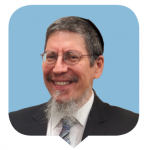 For the younger individuals reading this, I want you assure you that it’s true that people get to a point in their lives when they really believe they have seen it all. After all, “ein kal chadash tachas hashamesh,” there is nothing new under the sun (Koheles 1:9). Ask an experienced parent, ask a veteran educator, in fact, ask anyone who is highly practiced in any area and they will respond in kind.
For the younger individuals reading this, I want you assure you that it’s true that people get to a point in their lives when they really believe they have seen it all. After all, “ein kal chadash tachas hashamesh,” there is nothing new under the sun (Koheles 1:9). Ask an experienced parent, ask a veteran educator, in fact, ask anyone who is highly practiced in any area and they will respond in kind.
Personally, I have experienced three major hurricanes (David, Irene and Sandy); the 1985 earthquake in Mexico in which thousands perished; and 9/11, which changed the way Americans live their lives. Barring the horrors of war, I really didn’t think there was much else to experience. I was wrong. As the realities of Covid-19 began to unfold, I pointed out to my talmidim, “This is my first plague.” While I was somewhat glibly trying to tell them that we would have to play these circumstances by ear, I myself really didn’t understand the impact of the disruption that was rapidly going to control our lives. I am certain that many books will be written on the subject of the repercussions of Covid-19 and that, in fact, entire careers, across a spectrum of fields, will be built on its investigation. But in the short space allotted, I would like to focus on one salient feature that I believe provides the opportunity for growth through this nisayon.
Anyone remotely involved in working with today’s adolescents knows that the degree of actual social interaction in which they engage has greatly diminished over the years. They have the ability to literally detach themselves from the reality of life and exist “virtually.” Screens replace eye contact and ear buds shut out the auditory stimuli of the real world. This reality is not limited to teens. The need to “plug in” at the first possible opportunity has not only had a major impact on our relationships with others, but perhaps it can be suggested that this has become true with regard to our relationship with ourselves. It’s almost as though we are afraid to be alone with ourselves, afraid of what we might say to ourselves if we actually had the opportunity for reflection and introspection.
Throughout the Covid experience, I have consistently been hearing from teenagers that they have had to find ways to maintain their emotional equilibrium, and with so much unstructured time, they started reflecting on what they want to accomplish and how they want to grow as individuals. Normally, there are so many demands on their time and energy that they feel the need to escape and decompress. These past few months have introduced teens to an unfamiliar pace and rhythm in which they finally have the time to think, and I have seen many of them become significantly more aware of their inner worlds.
We have a term for this form of reflection: hisbodedus. To translate this as isolation would be a profound misnomer, even though its shoresh is badad, alone. The term is expressed in binyan hispael, the reflexive conjugation. It actually means to be alone with oneself. How ironic. When we are alone with ourselves, we get the opportunity to be more in touch with ourselves. The rest of the time, it’s as though we are trying to avoid having that potentially uncomfortable conversation that we know we should have. I heard an expression for using downtime for reflecting, which depicts this construct perfectly. It is called being “pausitive.” We all need to be able to take a pause and recognize the benefit of doing so. Covid has taught us that being apart from others does not have to translate into isolation. After all, we are always with the one person who we know wants to hear what we have to say, and I can unequivocally state that talking to yourself in this manner is one of the sanest things you can do.
Rabbi Mordechai Yaffe is rosh yeshivah of Mesivta Ateres Yaakov (MAY) in Lawrence, New York, and the rav of Kehilla Ateres Yaakov. Rabbi Yaffe holds a PhD in clinical psychology.
 Online learning definitely has some positives. My son’s fourth grade rebbe gives mishnayos quizzes each week. Once school went online, he began giving online quizzes. Tests were graded automatically and far more efficiently, and the students got their score right away. The rebbe said that even after regular school resumes, he hopes to continue to keep the quizzes online.
Online learning definitely has some positives. My son’s fourth grade rebbe gives mishnayos quizzes each week. Once school went online, he began giving online quizzes. Tests were graded automatically and far more efficiently, and the students got their score right away. The rebbe said that even after regular school resumes, he hopes to continue to keep the quizzes online.
*****
I have been teaching online courses (in addition to teaching “regular” classes) for over ten years. Since these courses are designed to be online, they are essentially a self-learning experience. At the beginning of each semester, students have access to a syllabus as well as to assignments and videos. Nevertheless, no online course can replace real human interaction. School is not a place for memorizing facts; a large part of learning consists of social interactions, having classroom discussions and learning to communicate with others. None of that really happens in an online classroom.
Dr. Estie Scheiner, as told to Avigayil Perry
Dr. Scheiner is an educational psychologist and a professor at Touro College in Israel. She lives in Ramat Beit Shemesh with her family.
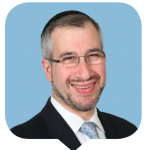 It sprang upon us with very little warning. Within hours, our yeshivah and so many others became online schools. All of our teachers became “first-year teachers,” tasked overnight with educating via Zoom, a platform few, if any, had much experience dealing with. They also had to learn new forms of student assessment.
It sprang upon us with very little warning. Within hours, our yeshivah and so many others became online schools. All of our teachers became “first-year teachers,” tasked overnight with educating via Zoom, a platform few, if any, had much experience dealing with. They also had to learn new forms of student assessment.
What are the lessons educators have learned through this crisis?
1. The best learning is via in-person interaction. Nachmanides (Bamidbar 1:18) points out that one of the goals of having Moshe and Aharon count the Jewish people was to enable them to see and thus educate each Jew. The smile, high-five or fist pump that teachers give students each day goes a long way toward developing the teacher-student relationships that fuels learning and growth. Additionally, research shows that the most successful teachers circulate through the classroom and arrange the students in a formation that guarantees each student has equal access to the teacher. Proximity is, by definition, lost in the online classroom, and engaging students therefore becomes more challenging. Non-verbal learning, such as learning through body language, is severely limited as well. For these reasons, our staff found it challenging to inspire and elevate students sans in-person interaction.
2. You can’t just mute a student in the classroom. Talented teachers who excel at classroom management skills find ways to engage the attention of even restless and disruptive students. Online learning platforms allowed teachers to simply and easily mute students. Some students actually reported having a better attention span during online classes as there were fewer interruptions due to the mute button, and the fact that they were alone at home when taking the class. Easily distractible students in the classroom were able to focus better without having other students around. On the flip side, the home atmosphere provided access to more devices for tech-savvy students, and other home distractions like food, siblings, et cetera.
3. Learning challenges that existed before “Zoom school” are exacerbated by it. Overall, most students and teachers displayed great resilience and flexibility while learning in an online environment. However, students with organizational challenges, those who need to constantly see the “board,” and those who need extra time to understand complicated material had difficulty learning online. Although teachers tried to make themselves available during off-hours, connecting to teachers proved more challenging when all communication was done online.
4. Efficiency and creativity increased. Physiologically speaking, it is challenging (and perhaps unhealthy) for youngsters to stare at a screen all day long. Classes needed to be shortened, and teachers were forced to eliminate any and all “down time” in the Zoom classroom. Teachers and students rose to this challenge, and essentially, the sense of urgency allowed most classes to learn the same amount of material more efficiently in less time. Methods of assessment changed as well. Teachers used oral testing, gave more frequent quizzes, relied on creative projects such as “make your own exam,” and even asked parents to proctor exams. Hopefully, this creative spirit will spill over into the in-person classroom, as educators continue to explore new venues for learning to take place for digital natives.
5. Tefillah b’tzibbur took a major hit. Online tefillahgroups worked for elementary and post-high school students but were very challenging for the high school population. The experience of communal prayer is difficult, if not impossible, to recreate via a screen, and a two-second delay. Work will be needed to re-inspire our teens with the magic and power of tefillah b’tzibbur. Similarly, the hands-on experience of scientific discovery in a laboratory setting was virtually non-existent in an online classroom.
To sum it up, while Covid-19 did spur creativity, efficiency and some aspects of positive classroom culture, the personal touch of classroom education is far more productive and effective for most students.
We pray that we will once again be able to interact with our precious students in-person, and we will hopefully inculcate into our educational philosophies the lessons learned from Covid-19.
Rabbi Yisroel Kaminetsky is rosh yeshivah of Hebrew Academy of Long Beach in New York and menahel of the Davis Renov Stahler Yeshiva High School for Boys in Woodmere, New York.
 When the weather forecast predicted snow in the past, the excitement among students was palpable. Kids would count down the hours until the storm arrived. As the snow began to fall, the children and their parents would wait for that e-mail or text announcing “Yeshivah is cancelled!”
When the weather forecast predicted snow in the past, the excitement among students was palpable. Kids would count down the hours until the storm arrived. As the snow began to fall, the children and their parents would wait for that e-mail or text announcing “Yeshivah is cancelled!”
Will that continue? I’m assuming not. On the morning of a snowstorm, an e-mail might arrive from the school stating, “Due to the inclement weather, yeshivah will be run via Zoom. Please make sure that your son is wearing school clothes and is in a quiet location for class.”
Zoom is here to stay.
*****
It has always been difficult for rebbeim and teachers to understand what goes on inside their students’ homes. The pandemic gave rise to a new phrase: “You’re unmuted!” Initially, it was a warning to kids who forgot to mute themselves. As the weeks passed, many educators found themselves inadvertently listening to conversations taking place in the home while a child was reading a pasuk or answering a question. Some of the things they heard shook them to their core.
“What’s the matter with you?”; “Why are you so stupid?!” Parents yelling at the kids. Parents simply yelling, perhaps at no one but themselves. Parents yelling at no one. One rebbe told me his heart bleeds for a certain boy now that he knows what this child has to cope with every day. The Zoom experience gave us educators a wake-up call. For some children, yeshivah is the most stable part of their day. Let’s give these precious gems a little more patience and a lot more love.
Rabbi Yitzi Ross is a rebbe at Yeshiva of South Shore in Hewlett, New York.
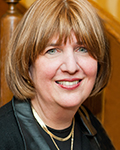 One silver lining that has come out of this crisis is the resilience that teachers, school administrators, and most importantly, students have displayed. We have discovered capacities within ourselves—inventiveness, resourcefulness, creativity and extraordinary dedication to keep learning going—that perhaps we didn’t appreciate or even know we had.
One silver lining that has come out of this crisis is the resilience that teachers, school administrators, and most importantly, students have displayed. We have discovered capacities within ourselves—inventiveness, resourcefulness, creativity and extraordinary dedication to keep learning going—that perhaps we didn’t appreciate or even know we had.
There has been tremendous growth and we have gained so much that we will take with us into next year, whatever next year looks like.
With regard to online learning, some students really thrived in that environment while others struggled. Of course, there are those students who live in challenging home situations, making it hard for them to really engage in the learning. Those are the students we worry about the most. As educators, we therefore place significant emphasis on addressing the social and emotional aspects as we continue to go through this crisis. At Kosloff Torah Academy, we have many layers of support—mechanchos, teachers, administrators and our guidance counselor—who continually reach out to students and their parents.
We organized virtual “town meetings” where each grade could engage in discussion sessions and students could share with us what was working and what was not. And we made changes based on student input. It was very helpful to have that free exchange of ideas with our students and for them to know that their voices matter.
We also offered a rich online extracurricular program—mostly in the evening—of activities and classes such as cooking and baking, debates, a kumzitz as well as mindfulness training and workout sessions. Because all of the programming was virtual, we had access to outstanding speakers in the US, Canada and Israel, and we organized several yemei iyun for inspiration and to strengthen our sense of community. As I write this it’s mid-July, and as we head into the coming year with so much uncertainty, we look forward to resuming in-person learning, but we’re prepared to pivot back into distance learning if necessary. We’ve learned a lot about how to make distance learning more effective, and our teachers are focusing on professional development in that area during the summer. Beyond that, this year’s experience has opened us up to the possibilities of offering courses online that perhaps we are not able to offer in school. If a few students have a particular interest and there aren’t many others who share that interest, we can allow them to take electives on their own online. Students are also coming to know themselves: What works for me as a learner? How do I learn best? And I think that’s an incredibly important piece of self-knowledge that they will carry forward with them.
In many Jewish schools and certainly in ours, there has been a lot of apprehension about technology and the role that it plays in our students’ lives. And while I certainly don’t want to minimize the downsides of technology in any way, I think our experience during the pandemic has enabled us to see how we can use technology for purposes of kedushah, which is a very powerful lesson—both for teachers and students. I also see indications that the allure of technology has been a bit diminished among our students, and that’s a hopeful sign.
When school closed after Purim, we initiated a journal project and encouraged students to reflect on the experience of living through this historic moment. We found that for many students, feeling vulnerable in a time of fear and uncertainty has deepened their gratitude for family and friends and strengthened their desire for connection to tefillah and chesed. In a deeper sense, all of us are learning to accept that we are not in charge and to trust that Hashem is in control. I have seen tremendous spiritual growth in a very real way among many of my students as they’ve navigated through this crisis.
By Cheryl Epstein, as told to Avigayil Perry
Cheryl Epstein is the principal of Kosloff Torah Academy in Philadelphia and has been a consultant for JNTP (Jewish New Teachers Project).
More in This Section:
Creative for a Cause by Rachel Schwartzberg

